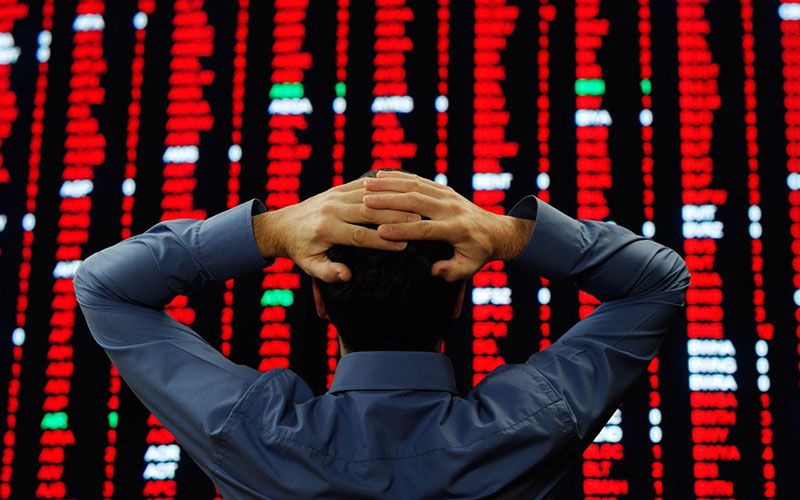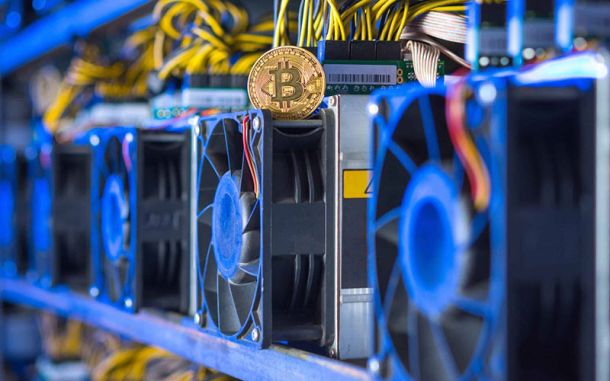FUD in the crypto market what to do in case of uncertainty
Learn about what FUD means in the context of cryptocurrencies, how to navigate trading in such an environment, and tips to avoid falling for fake news.

Photo: Allbreaknews.com
“Fear, Uncertainty, and Doubt,” commonly referred to as FUD, describes a scenario where catastrophic news, rumors, or negative events generate a sense of panic among investors. This expression perfectly captures the feelings investors experience when something potentially unfavorable comes onto their radar.
FUD often emerges more frequently in the realm of cryptocurrencies due to the absence of an official communication channel or instances of hacks on social media platforms. This makes it challenging to discern the truth. When in doubt, many investors tend to be guided by emotions, which further fuels a sense of urgency and panic among others.
What is FUD, or “Fear, Uncertainty, and Doubt”?
FUD, which stands for “Fear, Uncertainty, and Doubt,” represents the herd mentality during market downturns. In simple terms, it signifies “Fear, Uncertainty, and Doubt” and illustrates a situation where investors believe that a sudden drop in value is imminent solely based on the behavior of other participants.
As depicted in the price movement illustration, FUD often emerges near bottoms or lows caused by panic following a significant drop.
Several factors contribute to this phenomenon, including the limited knowledge of some investors and the fear of losing money, regardless of the level of confidence or clarity about the event.
However, the core characteristic of the herd effect in FUD is the pressure to follow the correction regardless of the fundamentals or a more rigorous analysis of the situation.
What Causes FUD?
This is a rather complex question, especially considering the speed at which information spreads on social media and digital communication groups. In this sense, singling out a single reason for FUD, or “Fear, Uncertainty, and Doubt,” is impossible, although certain events tend to have a more significant impact during moments of market panic.
External Influences, Negative News, and Misinformation
Commonly cited as a major FUD generator, negative news and rumors are easily found after a price drop, making them a straightforward explanation for the onset of panic sentiment.
Regardless of the level of trust in the information, investors tend to succumb to the “Fear, Uncertainty, and Doubt” feeling, acting impulsively and selling their positions. This further strengthens the herd effect, as the price drop itself helps propagate misinformation.
Investor and Market Competitor Behaviors
As the saying goes, “Where there's smoke, there's fire.” Investors tend to interpret price drops as a sign that something worse is looming. This is when those interested in accelerating the contraction in prices tend to speculate and generate uncertainty.
However, what many don't consider is the fact that numerous similar posts and information have gone unnoticed in the past without impacting the markets. This is evidence that FUD only works when investors are feeling insecure.
Manipulation and Market Strategies
In any market, whether commodities, debts, stocks, or cryptocurrencies, there are investors trading with high volumes and tools that create a false sense of significant buy or sell orders. These trade robots (bots) suddenly cancel orders or execute the opposite position on another exchange.
In essence, market strategies exist to manipulate investor sentiment by creating the false sense of significant buyers (or sellers) with the potential to impact prices. While this is common in any market, it's more prevalent in cryptocurrencies due to the traditionally high price fluctuations and the limited understanding of the market by some investors.
Impact of FUD on the Cryptocurrency Market
Due to the psychological impact that price drops have on investors, professional traders exploit this by further driving down prices through trading strategies or by sharing misinformation.
Known as buying high and selling low, this instinct is a perfect target for experienced traders.
Price Volatility and Investment Effects
The herd effect of FUD is common in cryptocurrencies due to the high volatility and potential of this market. Projections and warnings of drops create a sense of urgency, whether to view the content or share it on social media, regardless of whether there's a valid basis.
It's common to find YouTube videos and social media posts from analysts and influencers exploring catastrophic scenarios for cryptocurrency prices. This issue is exacerbated by historical precedents of 40% or more drops in a few hours, reinforcing the panic signal and amplifying the FUD effect.
Panic and Exaggerated Investor Reactions
The herd effect creates an apparent sense of urgency, influencing the investor to make a fear-based decision. This is when traders tend to act purely out of fear, abandoning their projections and pre-determined exit points.
“Fear, Uncertainty, and Doubt” (FUD) greatly influences investment decisions driven by psychological factors. As discussions of price drops grow in the media and social networks, less experienced investors tend to sell their positions, regardless of the potential for appreciation.
Risks of Hasty Decision-Making
One effect of FUD is making decisions in the heat of the moment without analyzing the accuracy of the information or the real potential impact. The fear sentiment takes over the investor, leading to hasty selling at the worst time, precisely when the price is experiencing a decline.
During this FUD period, it's common to find investors who previously believed in the asset but decide to sell simply because they think the market has suddenly changed. This mass exodus behavior fuels speculation about the decline movement (bear market), reinforcing the fear sentiment.
Why Are Cryptocurrencies So Susceptible to FUD?
Several factors can influence the initiation of downward movement causing fear and uncertainty among cryptocurrency investors. Among these factors are the external environment, failures in systems using smart contracts, and the use of social media to circulate sensational or inconsistent news.
Macroeconomic Scenario and External Influences
Undoubtedly, the herd effect of a drop (FUD) is more likely to occur during an unfavorable macroeconomic scenario, such as a looming recession risk. In such a situation, there's an incentive to liquidate assets considered riskier, including equities and cryptocurrencies.
In this context, recycled news and speculations gain traction in environments already characterized by uncertainty. On one side, social media algorithms and search engines prioritize sensational headlines, while on the other, the market is yearning for an explanation for the drop. The result is an expansion of FUD, spreading rapidly and accelerating the trend of price retracement.
False Promises and Lack of Knowledge about New Technologies
Another crucial aspect that fuels FUD in cryptocurrencies is investors' lack of knowledge about new technologies, such as artificial intelligence and quantum computing. When investors start to doubt the delayed deliveries of new projects and failures to meet initial promises, it can trigger a herd effect of selling based on uncertainty and fear. Regardless of the reason that sparked the change in sentiment, FUD creates an urgent sense of needing to exit the position, irrespective of the project's prospects and potentia
History of Drops and Failed Projects
One of the most frequently used arguments to promote FUD is the history of collapsed projects regardless of the cause. Indeed, over the past ten years and with more than 10,000 cryptocurrencies launched, it's relatively simple to find examples of substantial drops, fraud, and even failures in their code.
Similarly, in the stock market and real estate funds, there have been major companies and corporations that disappeared with investors' money or manipulated balances and accounting practices to conceal losses. However, this doesn't mean the same will happen again, but it helps spread FUD.
Strategies for Dealing with FUD
To manage markets during periods of FUD, investors should maintain an approach based on analysis and research from reliable sources, rather than being solely guided by psychological factors.
In this way, it's essential to understand that a correction period doesn't guarantee that the downward trend will persist. Therefore, it's crucial to follow some simple tips to avoid significant losses when the trend reverses.
Stay informed about the market and relevant news.
Don't make buying and selling decisions solely based on others' opinions, even those of experienced traders. Each person has a different risk appetite and investment horizon, leading to disparities in strategies.
Establish a clear, long-term investment strategy
Prepare your action plan in advance and avoid changing your mind during moments of sharp decline or rise. Instead of blindly trusting short-term pricing, try to focus on the asset's potential and what would genuinely need to happen to change your mind.
Set a sale price (stop-loss) based on your risk appetite and knowledge of the asset, avoiding changing this level based on the asset's performance or market sentiment. Set realistic goals for gradually and consciously cutting losses.
Diversify your portfolio to reduce systemic risk
Maintain a portion of your investment portfolio for the long term and make purchases regularly, regardless of sentiment or market trends. By creating a diversified portfolio, you'll have the resilience to absorb the natural market fluctuations during periods of stress and FUD.
The Herd Effect in Rising Markets, or FOMO
The same excitement that accelerates downward movements also presents itself when there's an upward trend. The herd effect in rising markets is known as the Fear of Missing Out (FOMO), reflecting the most evident psychological factors during this period.
Typically, during periods of the herd effect in rising markets (FOMO), you'll find:
- Fueled by greed and the pursuit of quick gains.
- Growing interest from investors in a short time span.
- Negative news having little to no impact on prices.
- Influencers and analysts creating excessively high projections.
- In the context of the herd effect in rising markets (FOMO), any news justifies a price increase. In any other scenario, such as during price consolidation periods, the same event wouldn't have a significant impact.
Should Investors Avoid Selling During FUD Periods?
It depends because when “Fear, Uncertainty, and Doubt” (FUD) becomes evident, indicating a sentiment to sell during a significant price drop, an investor who believes in the asset should hold their position.
By altering your buying and selling points solely based on rumors and unfavorable data, you increase the risk of selling at a low and buying at a high, which is the most common tendency among those who easily succumb to FUD.
In summary, even those who bought at a peak price can easily recover their investment if the asset has good fundamentals and prospects. Therefore, it's ideal to stick to your strategy regardless of the herd effect.




